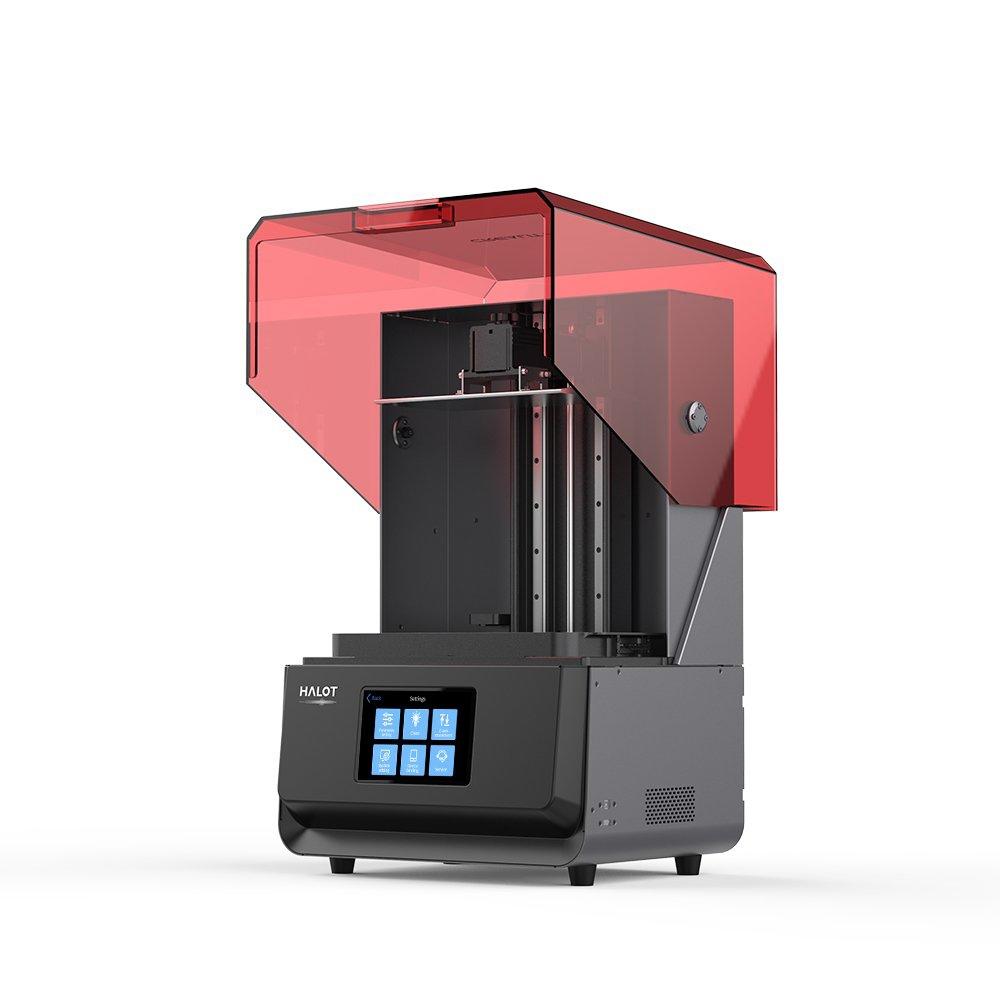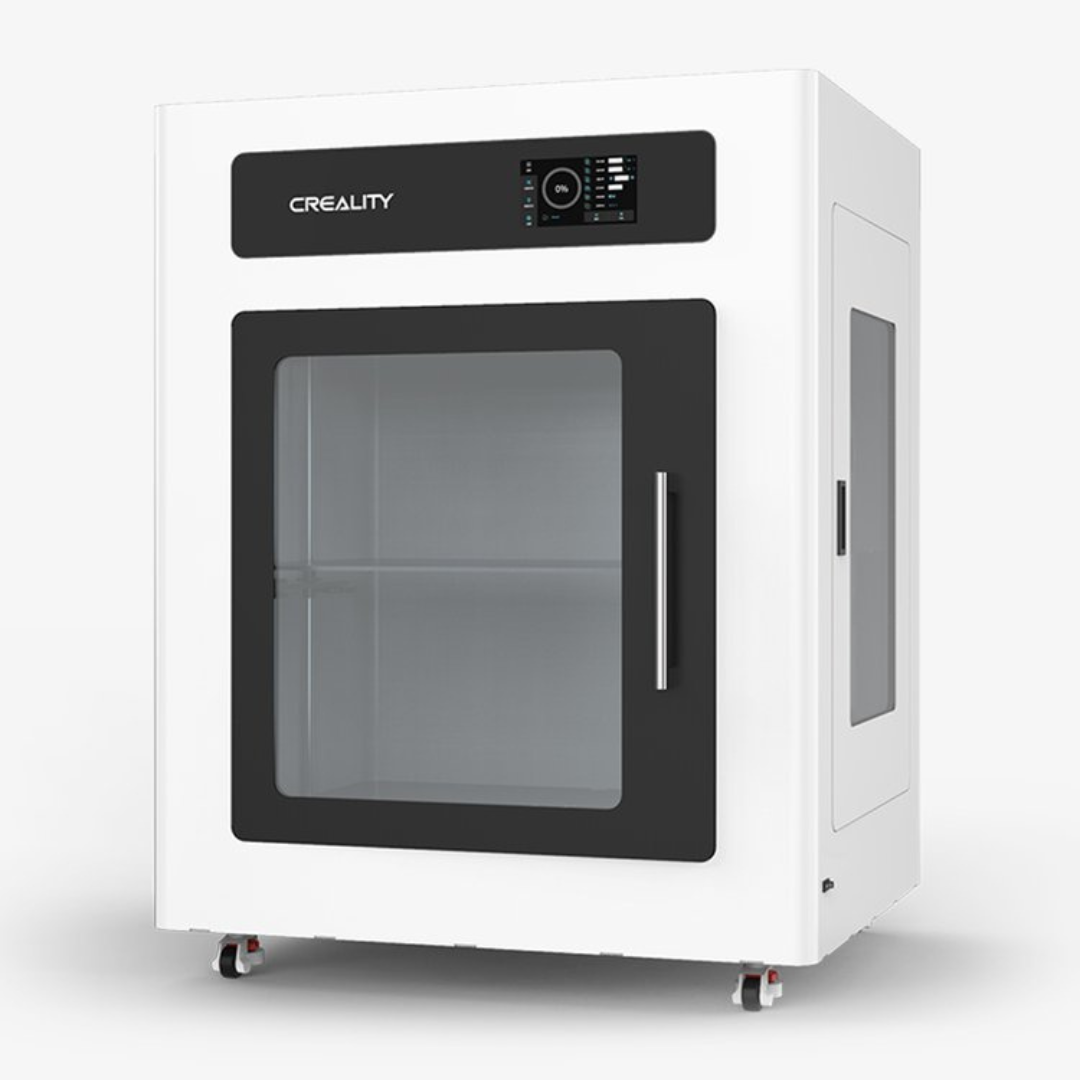Compare Halot Max vs CR 5060 PRO
Comparison between the best 3D printers
Choose the best 3D printer at the best price. The cheapest 3D printers are here.
Buy a 3D printer here with 3D Fila.
 |
 |
|
| Model | Halot Max[BUY Halot Max] |
CR 5060 PRO |
| Printing Material | Resin | Filament |
| Buy Resin for Creality 3D Halot Max | Buy Filament forCreality 3D CR 5060 PRO | |
| Estimated price | $3000,00 | $4500,00 |
| Manufacturer | Creality 3D | Creality 3D |
| Release Year | 2021 | 2021 |
| Print Volume [mm] | 293x165x300 | 500x500x600 |
| Printer Size [mm] | 480x387x770 | 905x800x1150 |
| Weight [kg] | 32,5 | 140 |
| Power Loss Recovery | NO | YES |
| Maximum Resolution [mm] | 0,03 | 0,1 |
| Processor | ATMEGA 2560 | |
| Display | Display touchscreen 5'' | Display touchscreen 7'' |
| Power Supply | 220V / 900 W | |
| Connectivity | SD / USB / Wi-Fi | SD / USB |
| Operating systems | Windows, Mac, Linux | |
| Date of registration in the system | 2022-11-04 | 2022-11-04 |
| Release date | 2021 | 2021 |
| Extra features | The Halot Max printer stands out for its large print size (293 x 165 x 300 mm) and uses SLA technology. It has an integral light source for improved accuracy and a strong core with an advanced operating system. Its Z-axis module ensures high precision, supported by efficient slicing software. The machine offers online OTA updates and boasts an adjustable layer thickness between 10 and 200 microns. Its XY-axis resolution is 3840*2160, with 0.05 mm accuracy, and an integral 405nm light source. The printer includes a 5" touchscreen and multiple connectivity options, such as USB, Creality Cloud, and HALOT BOX WiFi. With cutting-edge technology, the Halot Max is ideal for printing small models with uniform precision, thanks to its self-developed lighting system and stable printing mechanism, which includes dual linear guides, ball screws, and an intelligent brake system. | Creality CR-5060 Pro 3D Printer: Designed to create large three-dimensional models, it offers a large workspace of 500 x 500 x 600 mm. It stands out for its fully enclosed work chamber, ensuring a constant temperature during printing, essential for the quality and precision of the models. Its robust structure, with dimensions of 905 x 800 x 1150 mm, is supported by a stable frame, providing durability and stability. The CR-5060 Pro offers easy access to the heated bed, either through the front door or the flap at the top of the casing, and includes a filament spool mounted in a lockable recess, ensuring material protection. Additionally, this printer is equipped with casters, facilitating its transport and handling in different environments. Ideal for professionals and enthusiasts looking for high quality in large-scale 3D prints. |
| Support for multiple colors and materials (AMS and CFS) | NO | NO |
Notes * |
||
| Cost-benefit | 5 / 10 | 4 / 10 |
| Hardware | 1.2 / 10 | 3 / 10 |
| Tela | . | . |
| Print volume | 3 / 10 | 5 / 10 |
| Performance | 9 / 10 | 2 / 10 |
| [BUY Halot Max] |
Conclusion |
| In conclusion, when comparing the Halot Max and the CR-5060 Pro, both 3D printers come from the same manufacturer, Creality 3D, and were released in the same year, yet they cater to different needs and preferences within the 3D printing community. The Halot Max presents a compelling choice, particularly for users focused on high precision in smaller prints. With a maximum resolution of 0.03 mm, effective for intricate designs, and advanced features such as an integral light source and sophisticated slicing software, it stands out for users prioritizing quality and detail. Its compact size and lighter weight also make it practical for tight spaces, despite its lower print volume. On the other hand, the CR-5060 Pro excels in large-scale projects with a significantly larger print volume, perfect for users who require a robust system capable of producing bigger models. It features a fully enclosed work chamber and a stable frame, ensuring consistent printing temperatures and overall durability. Additionally, with power loss recovery, it appeals to those concerned about maintaining print integrity during unexpected interruptions. While the Halot Max offers superior performance in terms of print detail, the CR-5060 Pro provides a practical solution for larger projects. Price considerations lean towards the Halot Max, making it a more cost-effective option for precision work. Ultimately, the choice depends on the user's specific needs: detail-oriented small-scale printing or the ability to create larger models. |

